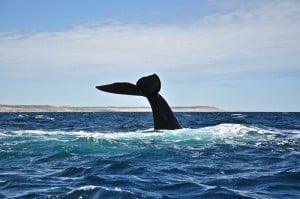 The Strait of Gibralter, the narrow strait that separates Spain from Morocco holds a high concentration of marine animals including several species of whales and dolphins. The strait separates the Mediterranean Sea from the Atlantic Ocean and has a unique geography, which enhances phytoplankton growth and offers an overabundance of food that attracts whales to the area.
The Strait of Gibralter, the narrow strait that separates Spain from Morocco holds a high concentration of marine animals including several species of whales and dolphins. The strait separates the Mediterranean Sea from the Atlantic Ocean and has a unique geography, which enhances phytoplankton growth and offers an overabundance of food that attracts whales to the area.
This body of water produces a very slow exchange of water between the Atlantic and Mediterranean and this results in a rich environment to sustain a diverse variety of marine life. The Strait of Gibralter is home to the pilot whale, sperm whale, orca whale and fin whale as well as the bottlenose dolphin, striped dolphin and common dolphin.
Unfortunately an increasing amount of traffic in the Strait of Gibralter has endangered some whale species, but despite heavy traffic there is still an abundance of whale activity in the area.
Many companies offer whale and dolphin watching tours, most of which originate in the southern tip of Spain. Most of the tours boast whale sightings more than 90 percent of the time.
A Swiss non-profit group called FIRMM (Foundation for Information and Research on Marine Mammals) gives whale watching educational tours from April through October including a week-long whale watching course. FIRMM offers several two-hour excursions daily for as little as 30 Euros per adult. Although FIRMM can’t guarantee whale sightings, they do have around a 99 percent success rate for finding whales.
To increase your chances for spotting whales, take a tour from April to July; this is when sperm whales are plentiful in the deeper waters of the strait. Or hop on a special tour in July or August to view orcas off the coast of Tangier, Morocco.
Another good option for whale watching in the Strait of Gibralter is with Whale Watch Espana. Tours originate from either Tarifa or Algeciras, Spain, depending on conditions. Tours are conducted in Spanish, English, German, French, Dutch and Italian. Whale Watch Espana is a non-profit organization dedicated to protecting the marine life in the strait.
Choose either a two-hour tour between April and October to view dolphins and whales or a three-hour tour in July or August for your chance to view the orca known as the killer whale. Make sure to dress warmly in water-resistant clothing because the Strait of Gibralter is notoriously windy. Do not forget your camera or video camera.
Written by Amiee Maxwell.
Photo by cimere.









I will be in Morocco Mid-December-Mid-January, will I still be able to participate in whale watching and have a high probability of actually being able to spot them?
Hi Adrian, Please let us know what you find out regarding whale watching. It can be hit or miss and Morocco is not a world-class destination for the activity. If you find a group going out and you’d like to share your adventure, please do let us know! Thanks!
Salam,
I want to do the whale safari with my familie. I want to book the safari can you send me a link? Anders some information?